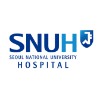
Evaluation of an Enhanced Tuberculosis Infection Control Intervention in Healthcare Facilities in...
TuberculosisStudy Design: Stratified, matched, cluster-randomized, controlled trial Unit of Randomization: Healthcare facility Study Duration: 3 years; prevalence of latent Tuberculosis infection (LTBI) in healthcare workers (HCWs) will be at measured at baseline, and LTBI incidence will be measured among susceptible HCWs at 12 and 24 months. Secondary outcomes will be measures at 0 (pre-intervention) 6, 12, 18, and 24 months. In year three, results will be analyzed and disseminated. Study Components: Assessment of institutional safety culture; observations/audits of Tuberculosis (TB) patient flow (wait times) and HCW TB infection control (IC) practices; documentation of time intervals for processing sputum smears and initiation of TB treatment; facility assessments; random allocation and implementation of enhanced Tuberculosis infection control (TB IC) package; testing of HCWs to determine LTBI at 0, 12, 24 months; cost evaluation of intervention. Sample Size: For the cluster randomized design, we estimate that 11 clusters per group will allow for 77 percent (%) power to identify a 30% reduction in LTBI incidence in the intervention vs. control clusters. This assumes LTBI incidence 5% per year in the control group, design effect for clustering of 2.0, and cluster size of 300 (average 600 HCW per cluster with 50% LTBI prevalence at baseline).

Effect of Prophylactic Use of Silymarin on Hepatotoxicity Induced by Anti-tuberculosis Drugs
TuberculosisTuberculosis is a worldwide common infectious disease and effective first line anti-tuberculosis (TB) drugs were available such as isoniazid, rifampicin, ethambutol, and pyrazinamide. However, anti-TB drugs may induce hepatic injury resulting in discontinuation of anti-TB drugs or changing anti-Tb drug regimen. Silymarin has been widely studied for the effect on hepatitis and it has been used in hepatology. Therefore, the investigators hypothesized that prophylactic administration of silymarin with anti-TB drugs may decrease the incidence and severity of hepatotoxicity induced by anti-TB drugs.

The Role of IGRA in Screening and Monitoring for TB During Anti TNF Therapy in Patients With IMID...
Inflammatory Bowel DiseaseCrohn Disease3 moreHong Kong is a region of intermediate TB burden, and the reactivation of latent TB in IMID patients treated with anti-TNF can be a serious problem. This study aims to investigate the role of IGRA in screening for latent TB in IBD patients and control subjects. In part II of the study, patients of other immune-mediated inflammatory diseases (IMID) will also be included to investigate the role of serial interferon-gamma release assays (IGRA) for the diagnosis of tuberculosis (TB) infection in patients with immune-mediated inflammatory diseases (IMID) treated with biologics

Sensitivity and Specificity of QuantiFeron -TB Gold Test (QFT-G)in Patients With Psoriasis
TuberculosisPsoriasisThe purpose of this study is to determine the level of agreement between QuantiFeron -TB Gold test (QFT-G)and Tubeculin skin test (TST)for screening of latent tuberculosis in patients suffering from psoriasis.

Diagnosis of Tuberculosis Infection in HIV Co-infected Children
Latent Tuberculosis InfectionTuberculosis1 moreBackground: The TB and HIV epidemics are closely linked in developing countries, where 450,000 children die from HIV annually. TB is a major cause of death in HIV-infected children and is reversing gains made in child survival. The traditional tuberculin skin test (TST) has limited diagnostic accuracy for detecting TB infection. Adult studies suggest that new blood-based diagnostic TB testing offers a quicker, more accurate way to diagnose TB infection. Such diagnostic testing may directly guide clinical management and preventive strategies in immune-suppressed HIV-infected children, who are at high risk of becoming TB diseased following infection. Data regarding the usefulness of these tests in children is currently limited. Objective(s) and Hypothesis(es): The investigators hypothesize that blood-based TB diagnostic testing can accurately identify children with TB infection. In a community with high rates of TB and HIV infection, the following specific aims will be investigated in HIV-infected and uninfected children: assess the agreement between the TST and blood-based diagnostic testing, compare the performance of the TST and blood-based diagnostic testing to a standardized history of TB exposure, measure the impact of age, nutritional and immune status on children's response to blood-based testing, describe factors that might modify children's response to testing over time, and 5) examine the effect of environmental exposures and previous vaccination on the TST, blood-based testing and other measures of immune responses to TB. Potential Impact: The benefits of an accurate, rapid diagnostic test of TB infection in children include 1) timely institution of treatment for TB infection to prevent severe disease and mortality, and 2) preclusion of over diagnosis and treatment. Treatment of childhood TB infection also prevents future contagious adult disease, thus decreasing community transmission. Blood-based diagnostic testing may also be able to identify children that are more likely to become ill following TB infection. Therefore, blood-based diagnostic testing has great potential to improve TB control and the health of HIV-infected and uninfected children, their households and communities.

Service Development: Assessing Non-attendance Rates in Outpatient Clinics
AsthmaSleep Apnea Syndromes2 moreMany studies have shown a high non-attendance rate in hospital outpatient clinics. The investigators have found a non-attendance rate of 25% in their asthma clinics and would like to investigate whether a reminder phone call will improve attendance rates. Patients will be randomised into two groups; one group will receive a reminder phone call one week prior to their hospital consultation and the other group will be managed in the standard manner (i.e. no reminder of any sort). The phone calls will be carried out on a Friday afternoon by a respiratory nurse specialist and a research officer for two asthma clinics based on a Wednesday morning and a Thursday afternoon.

Iron Absorption and Utilization During Tuberculosis and After Treatment
TuberculosisBackground: The disease burden of tuberculosis (TB), second only to HIV/AIDS among infectious diseases, is a major public health problem in developing countries. Accumulating evidence suggests that iron status is a primary determinant of TB progression. Anaemia is prevalent in patients with TB, particularly in sub-Saharan Africa, and associated with increased mortality. Anaemia in TB may be due to inflammation, dietary iron deficiency, or both, and distinguishing among these aetiologies is difficult. Iron supplementation is commonly used to treat anaemia in TB patients, but may be unnecessary if inflammation is the cause. Body iron sequestered by TB inflammation can be mobilized during treatment and used to correct the anaemia. Moreover, supplemental iron may be retained within macrophages, potentially increasing susceptibility to TB and leading to a poorer clinical outcome. Thus, better understanding of iron metabolism during TB and the aetiology of TB-related anaemia would clarify the potential role of iron in pathogenesis and optimal management of the disease. The investigators hypothesize that: a) TB will increase circulating hepcidin and thereby impair dietary iron absorption and systemic utilization of iron, resulting in iron sequestration and anaemia; b) TB treatment and resolution of inflammation over 6 months will decrease circulating hepcidin, correcting these impairments and improving iron status and hemoglobin; c) the majority of iron utilized to replenish hemoglobin during recovery from TB will come from mobilization of sequestered iron stores rather than from iron absorption. Objectives: Use iron stable isotopes to characterize iron balance over six months of TB treatment, and specifically to: a) quantify oral and intravenous iron incorporation (oral absorption and systemic iron utilization) at three time points during TB treatment (acute disease, after the intensive treatment phase and at completion of the continuation treatment phase); and b) determine the effect of treatment on iron mobilization from stores to replenish hemoglobin. Methods/Subjects: Using a triple stable-isotope technique, iron absorption from labelled test meals (57Fe) and systemic iron utilization after labelled intravenous doses (54Fe, 58Fe) will be determined in 18 Tanzanian subjects with newly diagnosed pulmonary TB. The subjects will be studied at three time points (i) the day after TB diagnosis while infected, (ii) after 8 weeks of intensive phase treatment, and (iii) after another 16 weeks of continuation phase treatment. Iron status, hemoglobin, hepcidin and inflammation indexes will be measured at each time point. Isotope enrichment during the two treatment phases will be measured to estimate the relative rates of iron absorption and mobilization from stores during the intensive and continuation phases to determine the relative contributions of iron absorption and iron mobilization from stores during TB treatment and recovery. Outcome: These studies will provide important new insights into the aetiology of anaemia and iron metabolism in TB patients. The results will provide essential data for evidence-based recommendations on the timing, administration route and efficacy of iron therapy in patients with TB, making possible, a safer and more effective treatment of anaemia in TB while decreasing morbidity and mortality from the disease.

Evaluating the Effectiveness of Interactive SMS Reminders on TB Treatment Outcomes
TuberculosisIn this study, Interactive Research and Development (IRD) in Karachi, Pakistan is evaluating the impact of Interactive Reminders on drug compliance and treatment outcomes. Interactive Reminders is an interactive SMS reminder system to help patients remember to take their TB medication. In this system, patients receive daily SMS reminders for the duration of their treatment at a pre-specified time, reminding them to take their medication. Patients are asked to reply back to the system, either through SMS or a missed call, with the time they took their medicine that day. If a response is not received within two hours, a second reminder is sent. If a response is still not received in a further two hours, a third and final reminder for the day is sent. Non-responsive patients are followed up with phone calls and a list of non-responsive patients is shared with clinics based on the parameters of non-responsiveness that they specify. IRD seeks to determine the impact of this system on treatment outcomes and compliance to prescribed medication through administering a randomized control trial among newly diagnosed TB patients in Karachi, Pakistan.

Feasibility of a Lateral Flow Urine LAM Test for Diagnosis of Tuberculosis in South Africa
TuberculosisTuberculosis3 moreThe purpose of this study is to evaluate the accuracy, diagnostic yield, operational performance, and time to diagnosis of a novel lateral-flow urine LAM test in detecting tuberculosis in HIV-infected adults. A secondary study objective is to evaluate the accuracy and diagnostic yield of the Cepheid Xpert MTB/Rif test in detecting tuberculosis in the blood of HIV-infected adults.

The Role of Therapeutic Drug Monitoring in Tuberculosis - a Pilot Study
Active TuberculosisDrug resistant TB is increasing and in order to enchance the efficacy of the current drugs, individualized therapy using plasma drug concentrations and minimal inhibitory concentration (MIC) determination may be of importance. This concept is defined as therapeutic drug monitoring (TDM). In this pilot study our hypothesis is that the ratio between MIC and drug concentration data is correlated to the bacterial load measured as time to positive liquid culture (TTP). In two sites in Sweden (Linköping and Karolinska Hospital Solna, Stockholm), 25 patients with pulmonary tuberculosis will be recruited. MIC-determination of Mycobacterium tuberculosis will be performed in BACTEC 960 MGIT and drug concentration will be determined at 2, 4 and 12 weeks after treatment initiation using LC-MS/MS methodology. Sputum cultures will be obtained at 0, 2 days, 7 days, 2 weeks, 4 weeks and 8 weeks and TTP will be measured in duplicate samples. Clinical follow up according to WHO criteria will be performed 1 year after completion of treatment.
